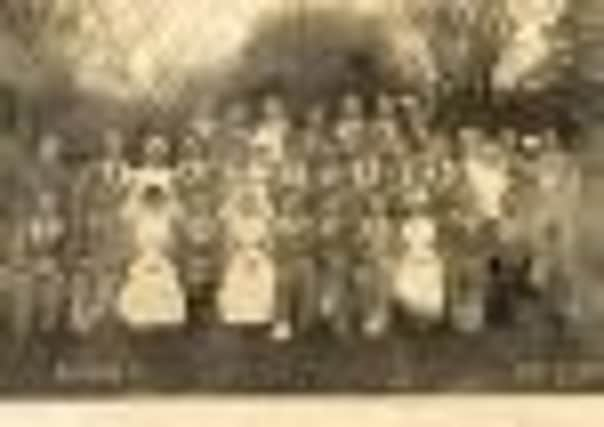City's important role caring for injured troops


With ever-increasing casualties, the allocated war hospital accommodation was inadequate.
In 1915 many more hospitals were turned over to War Office use, and among these were a number of what were then called ‘county asylums’. Graylingwell (the West Sussex County Asylum) was one of them, and for the next four years Graylingwell War Hospital saw a huge number of soldier patients pass through its doors.
Advertisement
Hide AdAdvertisement
Hide AdIn what must have been a logistical nightmare, 742 asylum patients were moved to ten other asylums across the south east of England during a period of nine days. There was then a period of five weeks while Graylingwell was made ready to be a war hospital.
The first convoy of 150 patients arrived in May 1915 and was followed by 177 further convoys, through to March 1919. All war hospital patients had left by May 1919, and the asylum patients returned from September that year. In all, 29,412 patients passed through Graylingwell War Hospital during the three years and ten months. Many were British, but there were also soldiers from Canada, Australia and New Zealand.
A SHORT-TERM STOP
With huge numbers of sick and wounded being returned to England, Graylingwell was a relatively short-term stop for its patients. The average stay was seven weeks, after which time a patient was transferred to a convalescent hospital, or to a military convalescent camp where he would be prepared for return overseas to the fighting.
A surprisingly small number of patients died while in Graylingwell – only 142. Some were buried in a specially-designated area of Chichester cemetery in Church Road, while others were taken by their families to be buried in their local churchyard.
Advertisement
Hide AdAdvertisement
Hide AdMarsh and Morey were two photographic businesses in Chichester. Marsh was in Southgate, and Morey in St Pancras.
They were quite regularly up at the hospital, taking photographs which were printed as postcards. These could be bought by the patients and nurses, and sent to their families.
Some of the postcards are labelled Graylingwell War (or Military) Hospital; some are labelled Kings or Queens and the ward number, eg Kings A1, Queens B2. Some are more abbreviated, e.g. KA1, QB2. Most but not all have the photographer’s name on the front along with a reference number.
Groups were taken inside and outside, but also in unexpected places (in the kitchen, and in the nurses’ recreation room).
CAN YOU HELP?
Advertisement
Hide AdAdvertisement
Hide AdI am attempting to gather together these photographs, so that as complete a pictorial record as possible can be created. So far I have about 90, but there are many more still to find. If you have a postcard, I would be very interested to hear from you, particularly if there is any writing on the back.
My contact details are at the end of this article. Donations would be very welcome; alternatively you could lend the photograph for scanning, and it could then be returned to you.
Comprehensive records were kept by the hospital, but these were all returned to the War Office after the war had ended. They were transferred to the National Archives, where at some point a sample was taken (not including Graylingwell) and the remainder of the records were destroyed.
This means that there is now no record of the 29,412 patients who passed through the hospital. I have started a list with details such as name, rank, regiment, and date of admission.
Advertisement
Hide AdAdvertisement
Hide AdSo far there are more than 500 names, but there is a long way to go! If you have details about one of these thousands of patients, I would be very pleased to hear from you (contact details at the end of this article).
Alongside collecting photographs and details of soldier patients for the record office Graylingwell Hospital catalogue, I am also writing a booklet on Graylingwell War Hospital. This will appear in the New Chichester Papers series in the autumn.
To help with the writing of the booklet, I am also looking for any other items relating to the war hospital. These could be printed items, autograph books, souvenirs etc. As with the photos, these could be donated to the record office, or loaned for scanning.
Write to Katherine Slay, West Sussex Record Office, County Hall, Chichester PO19 1RN; telephone 01243 753602; email [email protected]